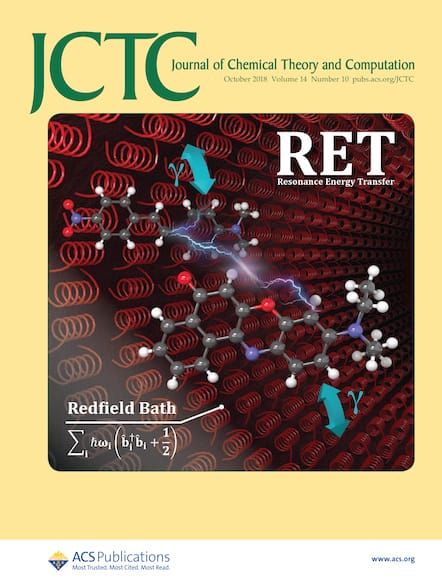Exploring Chemical Space with Chemistry-Inspired Dynamic Quantum Circuits in the NISQ Era.
IF 5.7
1区 化学
Q2 CHEMISTRY, PHYSICAL
引用次数: 0
Abstract
The generation of chemical molecular structures is crucial for advancements in drug design, materials science, and related fields. With the rise of artificial intelligence, numerous generative models have been developed to propose promising molecular structures to specific challenges. However, exploring the vast chemical space using classical generative models demands extensive chemical structure data, considerable computational resources, and a large number of model parameters, which hinders their efficiency. Quantum computing presents a promising alternative by exploiting quantum parallelism and entanglement, potentially reducing the computational overhead required for such tasks. In this study, we designed a quantum-based molecular generator (QMG) specifically tailored to generate small molecules containing carbon, nitrogen, and oxygen atoms. This model imposes strict constraints on the quantum circuit's output quantum states, significantly eliminating mathematically invalid connection graphs and enabling more efficient sampling of valid molecular structures. Remarkably, our quantum circuit, utilizing only 134 parameters, is capable of enumerating all molecular structures comprising up to nine heavy atoms, showcasing the parameter efficiency achievable through quantum superposition and entanglement. Our experimental results show that the output generated by this circuit exhibits a high degree of validity and uniqueness after Bayesian optimization, showing comparable performance to classical deep generative models. Furthermore, by fixing specific parameters in the quantum circuits, the quantum generator can constrain the chemical space and exclusively generate chemical molecules containing specified functional groups. This feature underscores its potential value for targeted applications in specific domains, especially in drug discovery. Overall, this compact design not only reduces parameter demands but also enables efficient exploration of a nontrivial portion of chemical space, demonstrating a key advantage of quantum-based generative models over larger classical counterparts.在NISQ时代用化学启发的动态量子电路探索化学空间。
化学分子结构的生成对于药物设计、材料科学和相关领域的进步至关重要。随着人工智能的兴起,许多生成模型已经被开发出来,以提出有前途的分子结构来应对特定的挑战。然而,利用经典生成模型探索广阔的化学空间需要大量的化学结构数据、大量的计算资源和大量的模型参数,这阻碍了它们的效率。量子计算通过利用量子并行性和纠缠提供了一个有前途的替代方案,有可能减少此类任务所需的计算开销。在这项研究中,我们设计了一个基于量子的分子发生器(QMG),专门用于生成含有碳、氮和氧原子的小分子。该模型对量子电路的输出量子态施加了严格的约束,显著地消除了数学上无效的连接图,并使有效分子结构的采样更有效。值得注意的是,我们的量子电路仅使用134个参数,就能够枚举包含多达9个重原子的所有分子结构,展示了通过量子叠加和纠缠实现的参数效率。实验结果表明,经过贝叶斯优化后,该电路生成的输出具有高度的有效性和唯一性,性能与经典深度生成模型相当。此外,通过在量子电路中固定特定参数,量子发生器可以约束化学空间,并专门生成含有特定官能团的化学分子。这一特性强调了它在特定领域的靶向应用的潜在价值,特别是在药物发现方面。总的来说,这种紧凑的设计不仅减少了参数需求,而且能够有效地探索化学空间的重要部分,展示了基于量子的生成模型相对于大型经典模型的关键优势。
本文章由计算机程序翻译,如有差异,请以英文原文为准。
求助全文
约1分钟内获得全文
求助全文
来源期刊

Journal of Chemical Theory and Computation
化学-物理:原子、分子和化学物理
CiteScore
9.90
自引率
16.40%
发文量
568
审稿时长
1 months
期刊介绍:
The Journal of Chemical Theory and Computation invites new and original contributions with the understanding that, if accepted, they will not be published elsewhere. Papers reporting new theories, methodology, and/or important applications in quantum electronic structure, molecular dynamics, and statistical mechanics are appropriate for submission to this Journal. Specific topics include advances in or applications of ab initio quantum mechanics, density functional theory, design and properties of new materials, surface science, Monte Carlo simulations, solvation models, QM/MM calculations, biomolecular structure prediction, and molecular dynamics in the broadest sense including gas-phase dynamics, ab initio dynamics, biomolecular dynamics, and protein folding. The Journal does not consider papers that are straightforward applications of known methods including DFT and molecular dynamics. The Journal favors submissions that include advances in theory or methodology with applications to compelling problems.
 求助内容:
求助内容: 应助结果提醒方式:
应助结果提醒方式:


